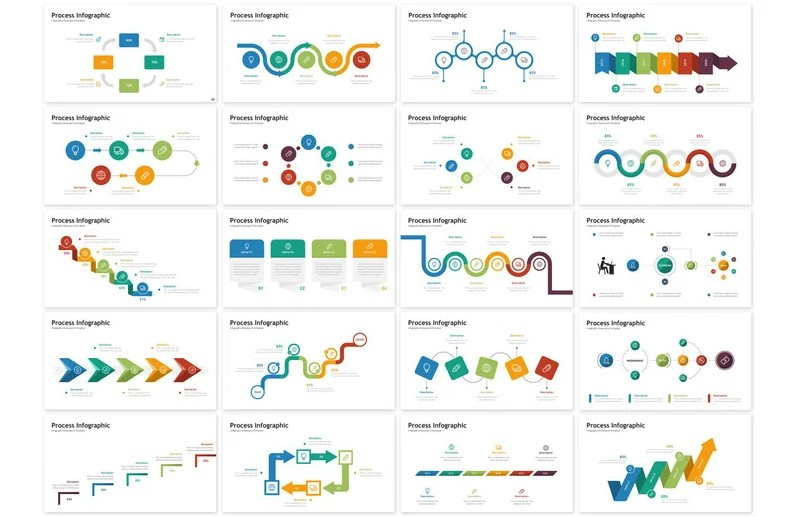Step 3: Define Learning Pathways
Watch video to better understand this resource
This progression is similar to the goal of instructional scaffolding based on Lev Vygotsky‘s work on the Zone of Proximal Development. Learn more below and better articulate your stories of teaching and learning.
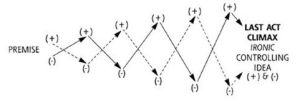
McKee, R. (1999). Story: Substance, structure, style, and the principles of screenwriting. Methuen Publishing
How do your learning scenes turn?
With the learning plot points of your course initially defined along a macro-storyline informed by learner archetypes and theory-based design, it is time to apply the next screenwriting paradigm to refine further. It is an assertion by author Robert McKee which says that the value of each scene in a story should turn from positive to negative, or vice versa (truth to lie, like to dislike, etc.). The ‘turning’ of these scenes depends on conflict facing the characters and how it is dealt with. More importantly, this conflict builds in consequence and scale from Scenes to Sequences to Acts and to the Story itself.
Zone of Proximal Development
The concept of scaffolding comes from the work of psychologist Lev Vygotsky and his ‘zone of proximal development’ (Rousseau, 2018).
“[Vygotsky] theorized that when students are given a task that is just out of the reach of their competence, but are able to secure the support of others, it is likely that they will accomplish the task in a more successful fashion than if left alone to struggle with it. With scaffolding, the educator is able to break down tasks within this reach, as well as offer guidance on how tasks can be completed. By being able to participate in a concrete learning process, students can more easily complete tasks that seem abstract or confusing when first introduced (Sawyer, 2006),” (Rousseau, 2018).
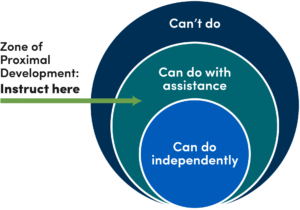
Rousseau, P. (2018). Instructional Scaffolding: Best Practices. Ryerson University Ryerson University. https://www.ryerson.ca/content/ dam/learning-teaching/teaching-resources/assessment/instructional-scaffolding.pdf
Instructional Scaffolding
McKee’s concept of building story through turning scenes with ever-growing consequence is quite similar to instructional scaffolding. In its case, the scaling of content and production relies on the turning of knowledge and ability in relation to prescribed CLOs without overwhelming with quantity or unreasonable expectations of quality – given the time available and the educational levels engaged.
By envisioning the steps of learning in detail, course content can be better delivered in a more timely, purposeful manner. This way needed skills for modern academic learning and achievement can be interwoven through smaller stakes activities which build to more substantive scoring.
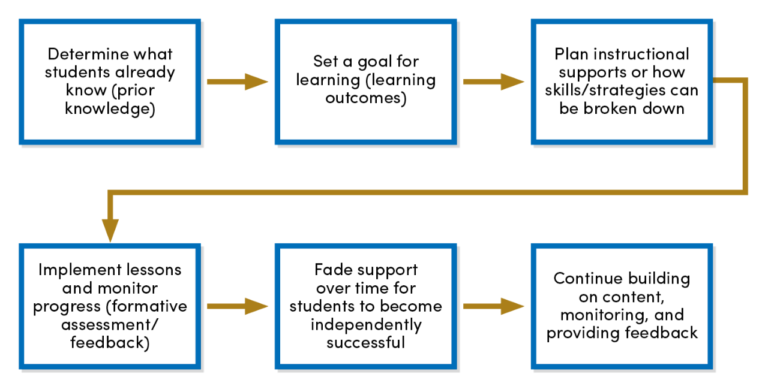
University at Buffalo. (2021, December 22). Scaffolding content. Welcome to the University at Buffalo – University at Buffalo. https://www.buffalo.edu/catt/develop/build/scaffolding.html
1. Process Scaffolding
“Process scaffolding breaks a complex task down into smaller, more manageable parts that slowly increase in cognitive complexity in order to form a cohesive whole (University of Waterloo, n.d.; Schroeder, 2012). By breaking down major assignments into several components, you can focus on the skills or types of knowledge students require to successfully complete the larger assignment, and support them in a way where student engagement is increased, rather than assigning a single assignment that might be initially confusing and overwhelming (Writing Center, University of Colorado, n.d.).
Sequencing these assignments is crucial: you must order them in such a way that students master a skill set that is important to develop the next. The process allows students to see the bigger picture, and allows you to empower students to work towards it independently.”

Rousseau, P. (2018). Instructional Scaffolding: Best Practices. Ryerson University Ryerson University. https://www.ryerson.ca/content/ dam/learning-teaching/teaching- resources/assessment/ instructional -scaffolding.pdf
Sequencing a Process Scaffolded Assignment
“In order to effectively break down a process scaffolded assignment, you must first identify the knowledge and skills needed in order to complete the assignment, and create a path for students to follow in the form of several shorter assignments that are both easier to complete and understand (Caruna, 2012). According to Caruna, this is typically broken down into four steps:
- Establish a final assignment, including the skills that you want to evaluate. Make sure that the assignment has clear learning objectives.
- Determine the prerequisite skills students will need to have to be successful on the assignment, and list them. Think about whether these prerequisite skills are reasonable for students to have. If they are not, then you will want to scaffold these into your course work.
- Identify the needed skills sequence.
- Create an assignment sequence that focuses on individual skills so that students build the predetermined prerequisite skills needed to complete the final assignment.”
Rousseau, P. (2018). Instructional Scaffolding: Best Practices. Ryerson University Ryerson University. https://www.ryerson.ca/content/ dam/learning-teaching/teaching-resources/assessment/instructional-scaffolding.pdf
Example: Research Paper
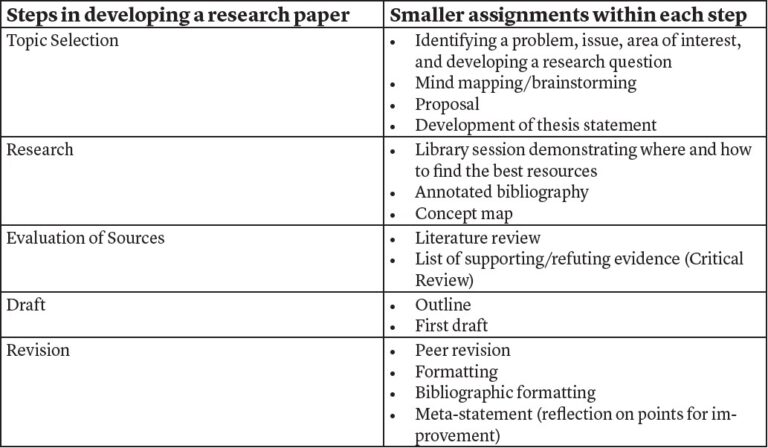
Rousseau, P. (2018). Instructional Scaffolding: Best Practices. Ryerson University Ryerson University. https://www.ryerson.ca/content/ dam/learning-teaching/teaching-resources/assessment/instructional-scaffolding.pdf
2. Critical Thinking Scaffolding
“According to Fedko and Skene, there are specific scaffolding techniques that you can use to help students develop critical thinking skills. As with Process Scaffolding, Critical Thinking Scaffolding assigns work in a way that allow students to move gradually from lower order critical thinking skills towards more complex, higher order critical thinking skills.
Lower order level assignments may consist of abstracts, summaries, or descriptions, in order to reinforce skills such as remembering and understanding concepts. Higher level skills such as applying, analyzing, evaluating, and creating, can be reinforced through assignments such as case study analysis, mind-mapping, developing a business plan, research paper, or lab report.”
“According to Browne et al., there are four steps to proper critical scaffolding:
- Shared understanding of the scaffold between instructor and student.
- Expert modeling of skills.
- Continuous feedback and assessment.
- Deconstruction of the scaffold.”
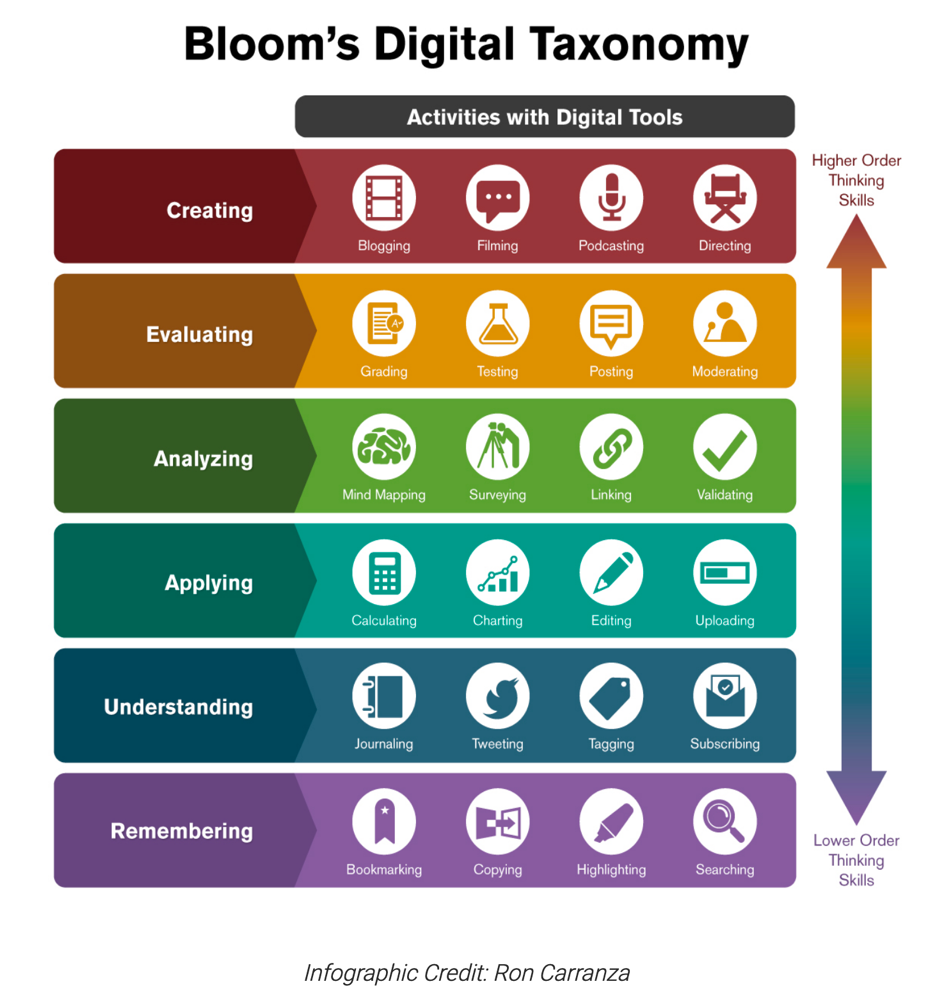
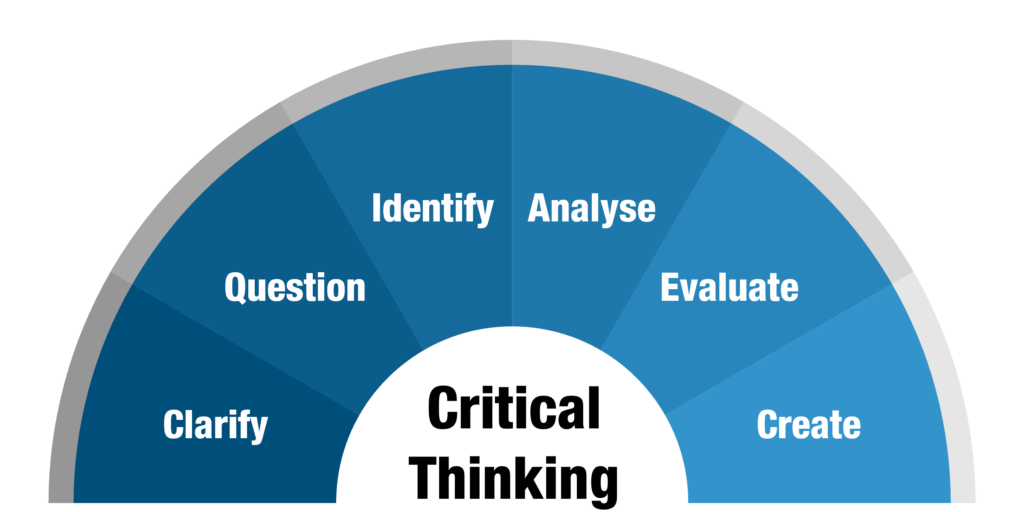
Practical ways to engage critical thinking goals:
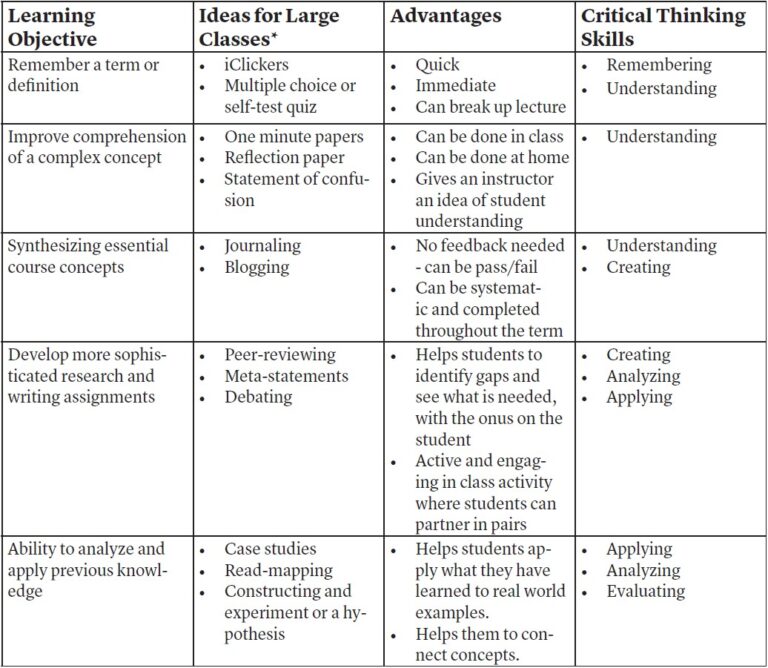
Activity #4 – Articulating Assessment
Instructions: Now you are going to apply the concepts of Process and Critical Thinking scaffolding to articulate the more detailed steps of the goals you outlined in your macro-storyline of learning in Step 2.
Along these defined steps you should indicate:
- possible tools and environments used for delivery and interaction
- assigned marks along the segmented process – does not have to be all steps.
Homework: Finalize submission dates and begin creating rubrics to reflect your assessment scheme. (For excellent advice on creating rubrics click here.)
